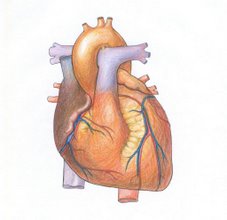On the other hand, good posture is seen as very attractive. This is evident by the fact woman often find men with straight posture more attractive. This may because erect posture portrays confidence.
Financially, posture can effect you chances of getting a job. Employers often see poor posture as signs of poor confidence and laziness.
But maybe the most serious aspect is health. Poor posture has been proven to lead to headaches, back pain, neck pain and fatigue. These effect every area of life. You ability to work, play with your kids or simply sleep at night.
If your sick and tired of the negative effects your poor posture is having on your life, I suggest you read each and every word that follows.
In this letter I'm going to explain how you can achieve "perfect" posture using an easy to follow and proven scientific approach.
"Stand up straight! - If
Only It Was That Easy..."
How many times are we told as children the cause of our poor posture was simply laziness and that we simply need to "Stand up straight!" and "Pull your shoulders back"?
Well, if only it was that easy. Walking around standing up straight with our head up may be a slightly effective way of covering up our poor posture, but it will not cure the underlying problem - and anyway, who can concentrate on maintaining this 24 hours a day?
"There Is Only 1 Way
To Improve Posture..."
No matter how much so called posture "experts" push the old fashioned idea that you can simply hold and maintain correct posture through changing your "habits" or walking around with a book on your head...
the truth still remains...
The only proven way to improve posture is by correcting genetic and environmental muscle imbalances .
You see, a correct and straight spine is kept in its correct anatomical position by the muscles surrounding it. They maintain a straight spine like supporting lines on a suspension bridge maintain a straight road. If any of these muscle are too weak or to strong your spinal column will be pulled out of line.
Using these proven principles, personal trainer Mark Sias has created a simple to follow and comprehensive guide to improving ones posture.
Using the principle of postural muscle equilibrium The Perfect Posture Program™ is able improve posture no matter what posture condition you suffer from.
Just take a look at the following examples that follow. You may notice one or more problems that you your self suffer from...
Lordosis “Sway Back”
Easy Cure: Simple to follow and execute exercises found on page 4
Kyphosis "Hunch Back"
While there are extreme cases of this that are congenital, even they can be drastically improved with methods such as explained in the guide. Typical gym rats suffer because they favour vanity exercises like bench presses & crunches. These build shoulder, chest, & abdominals. Thus, resulting in overdevelopment of the anterior chain. While neglecting posterior chain muscles.
Easy Cure: Simple to follow and execute exercises found on page 6
Scoliosis
Most cases, the cause of scoliosis are deemed unknown, research seems to indicate a link between it & poor bone density as well as some other factors we’ll take a look at. If detected early enough it can be controlled w/ special orthotic type braces & yes, even exercises!
Easy Cure: Simple to follow and execute exercises found on page 8
Duck Feet
The usual cause of this is weak & tight hip rotator muscles like the Tensor Fascia Latae, Gluteus Minimus, & Gluteus Medius. Another likely culprit is the poorly developed ankle supinators like the tibialis anterior & posterior with tight peroneus longus muscle.


